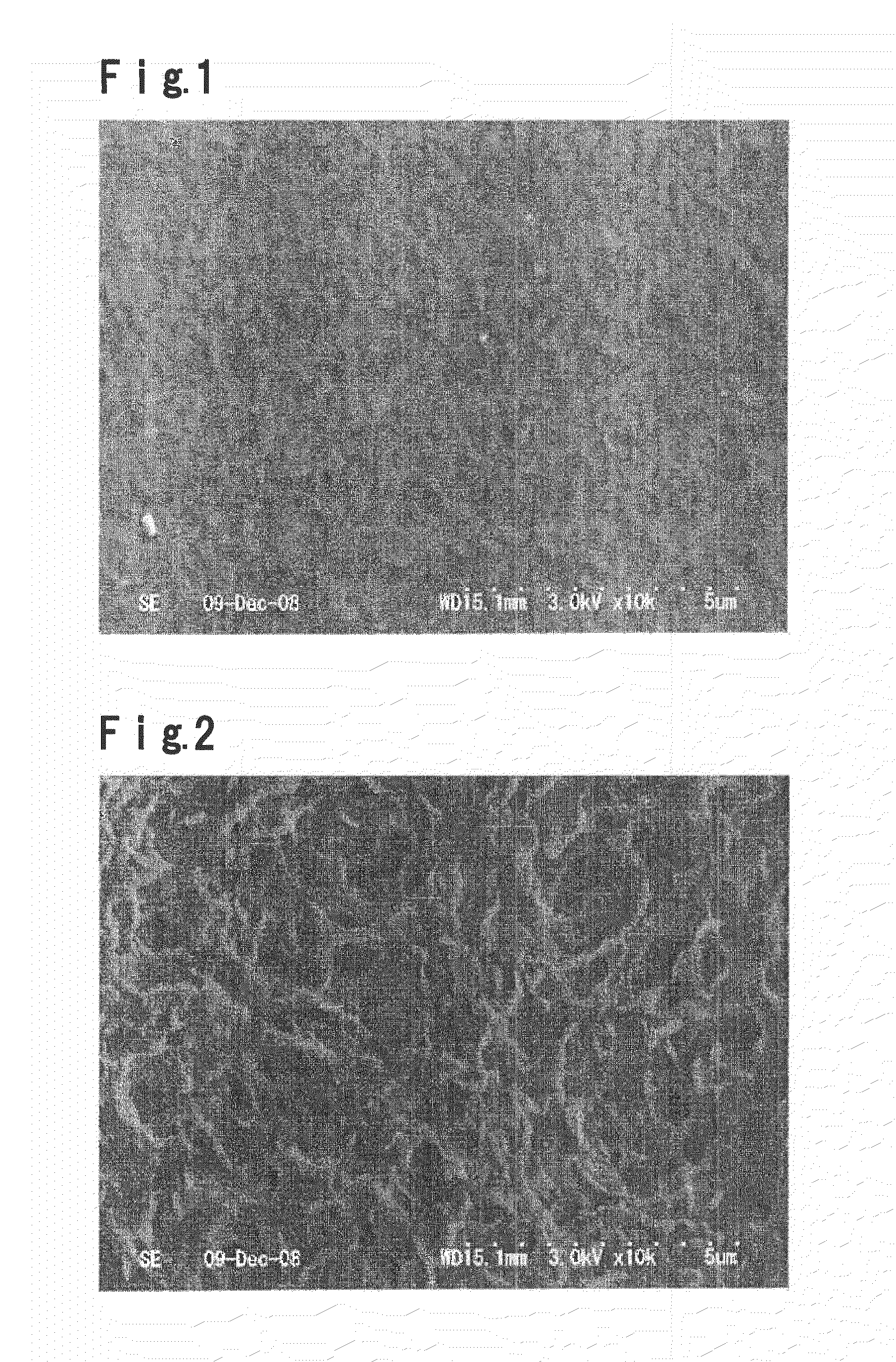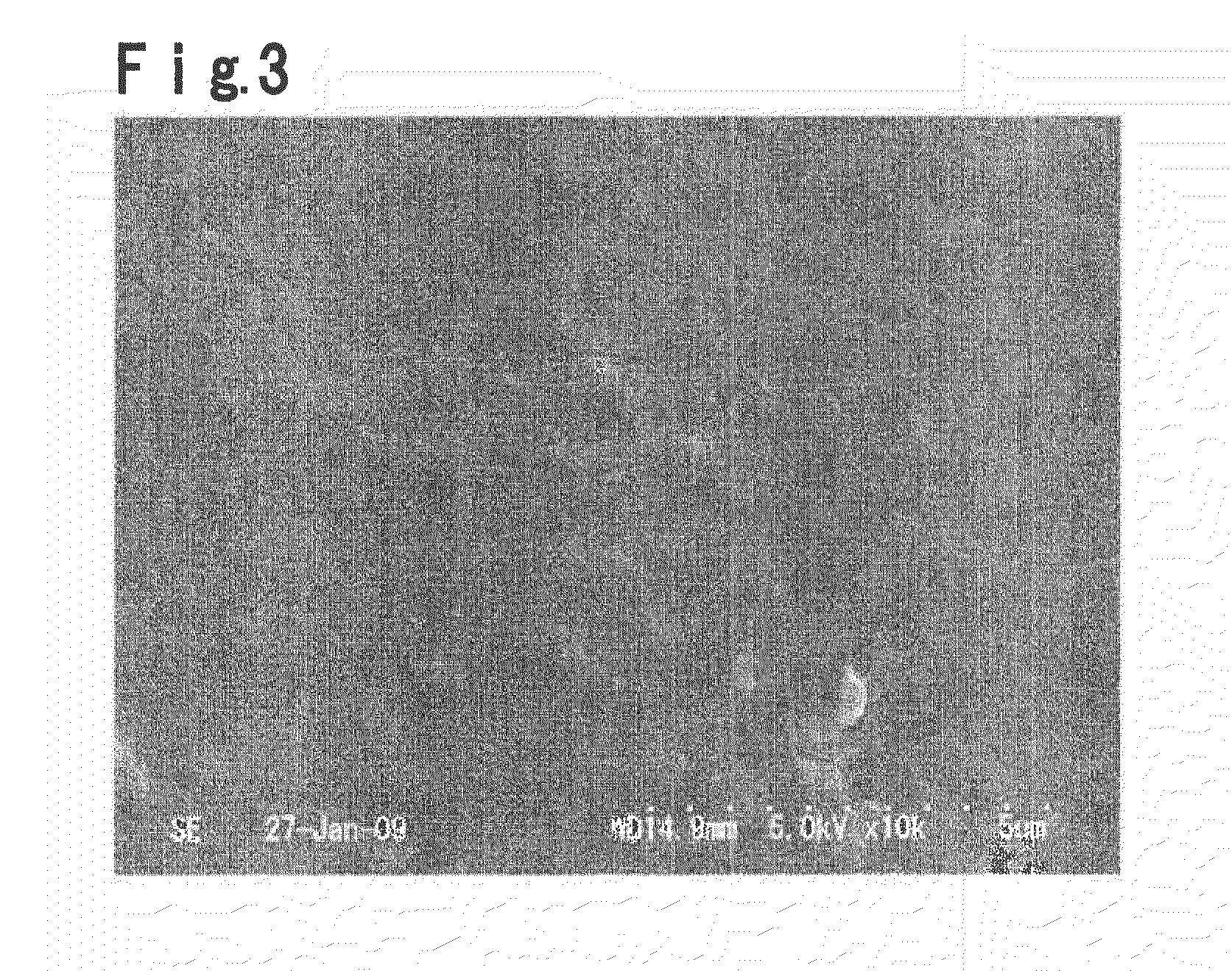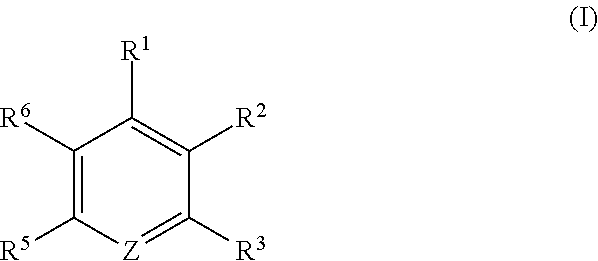Fluorocopolymer composition and its production process
a technology of fluoropolymer composition and production process, which is applied in the direction of chemical/physical processes, dyeing process, textiles and papermaking, etc., can solve the problems of liquid dispersion liquid obtainable from the solvent losing fluidity in the vicinity of room temperature, and the forming method is limited to melt forming
- Summary
- Abstract
- Description
- Claims
- Application Information
AI Technical Summary
Benefits of technology
Problems solved by technology
Method used
Image
Examples
example 1
[0107]In a test tube with a lid made of borosilicate glass, 50 mg of ETFE (manufactured by Asahi Glass Company, Limited, Fluon (trademark) LM-720AP, melting point: 225° C., melt index: 18.7 (297° C.), hereinafter referred to as “ETFE1”) as a fluorocopolymer, and 5 g of 2,6-difluorobenzonitrile were put and heated to 177° C. with stirring, whereupon the content in the test tube became a uniform and transparent solution. The test tube was gradually cooled, whereupon the solution became clouded at 168° C. The test tube was heated again, whereupon the solution became a uniform and transparent solution again at 173° C. ETFE1 was gradually added with stirring the solution while the temperature was maintained at 200° C., to increase the content of ETFE1, whereupon a uniform and transparent 2,6-difluorobenzonitrile solution (ETFE1 concentration: 60 mass %) containing 7.5 g of ETFE1 was obtained. The test tube was gradually cooled, whereupon the solution became clouded at 180° C. The test tu...
examples 2 to 58
[0108]The dissolution test was carried out and a fluorocopolymer composition was obtained in the same manner as in Example 1 except that the amount (the total amount of 50 mg of the initially charged amount and the amount gradually added) of ETFE1 used and the type of the solvent such as the fluorinated aromatic compound were changed as illustrated in Table 1 with respect to Examples 2 to 44 or in Table 2 with respect to Examples 45 to 58. The results of measurement of the dissolution temperature are shown in Tables 1 and 2.
[0109]A case where the amount of the fluorocopolymer charged shown in Table 1 or 2 is at most 0.05 g, means that the entire amount of the fluorocopolymer was initially charged. Further, in a case where the entire fluorocopolymer was initially charged, once the fluorocopolymer was dissolved, the solution was gradually cooled to make it clouded, and the solution was heated again to obtain a uniform solution, and the temperature at that time was regarded as the diss...
example 59
[0112]In a 20 ml pressure resistant glass reactor, 0.26 g of ETFE1 and 5 g of 1,3-bis(trifluoromethyl)benzene were put and heated to 150° C. with stirring under autogenous pressure, whereupon a uniform and transparent solution was obtained. The reactor was gradually cooled, whereupon the solution became clouded at 130° C. The reactor was heated again, whereupon the solution became a uniform and transparent solution again at 140° C. The dissolution temperature of ETFE1 at a concentration of 5 mass % was considered to be 140° C. The obtained fluorocopolymer composition is the composition of the present invention.
PUM
| Property | Measurement | Unit |
|---|---|---|
| melting point | aaaaa | aaaaa |
| melting point | aaaaa | aaaaa |
| temperature | aaaaa | aaaaa |
Abstract
Description
Claims
Application Information
 Login to View More
Login to View More - R&D
- Intellectual Property
- Life Sciences
- Materials
- Tech Scout
- Unparalleled Data Quality
- Higher Quality Content
- 60% Fewer Hallucinations
Browse by: Latest US Patents, China's latest patents, Technical Efficacy Thesaurus, Application Domain, Technology Topic, Popular Technical Reports.
© 2025 PatSnap. All rights reserved.Legal|Privacy policy|Modern Slavery Act Transparency Statement|Sitemap|About US| Contact US: help@patsnap.com



